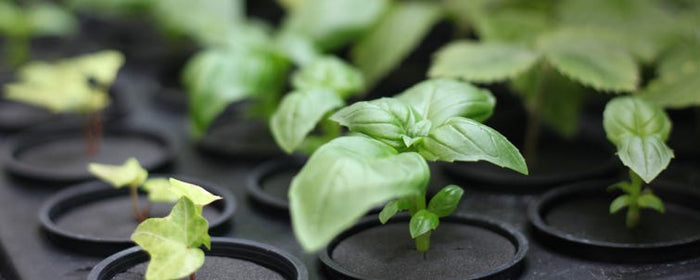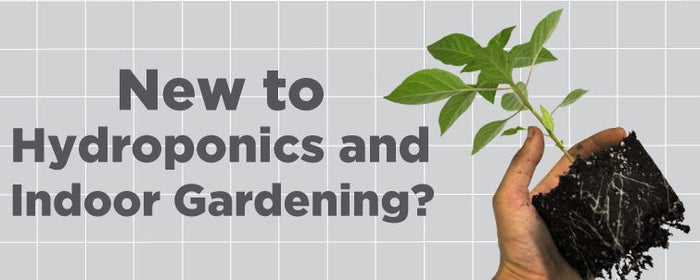![Mammoth P - 16% Extra Yield!? [Q&A]](http://www.growell.co.uk/cdn/shop/articles/blog_mammoth-p-16_-extra-yield_-_q_a.jpg?v=1673520422&width=1100)
Mammoth P - 16% Extra Yield!? [Q&A]
Ever heard of MAMMOTH P®? It’s 100% organic, biodegradable and has increased yield by up to 16%! How? The magic’s in the microbes! And Colin from Growcentia has joined us to explain it all.

Q
You’ve got a very interesting story – MAMMOTH P® appeared out of nowhere and now it’s everywhere.
A
Tell me about it. I’m shocked myself. I left Colorado State University (CSU) in March 2015 (just over two years ago) to start the company. I produced the first batch of MAMMOTH P® in a one car garage, in Fort Collins Colorado. Before that, I worked as a Research Scientist at the CSU, thinking about ways our team could help farmers by developing a natural (microbial) process for cultivators. Now we’ve got over 37K Instagram followers and are selling MAMMOTH P® in over 700 grow stores in the US – and all over the world!
Thousands of growers across the world are currently using MAMMOTH P® and are experiencing great results – we receive positive testimonials every single day.

Q
You clearly filled a big gap in the market. Why phosphorus?
A
Good question.
We developed this technology to solve a problem facing producers - when P fertilizers are added to soils and other growth media, up to 70% becomes almost immediately unavailable to plants due to natural chemical binding and transformations. This creates a huge environmental problem over time, due to high phosphorus pollutants in agricultural run-off.
Because of this, the use of P has been strongly regulated in many states and you can’t add any phosphorus, even if your plants are deficient, unless you take samples and can prove there’s low phosphorus in your soil.
The microbes in MAMMOTH P® can unlock bound nutrients, transforming P and micronutrients back into plant available forms, maximizing plant nutrient uptake to significantly increase plant yield.
Phosphorus is critical for all life, and especially plants! One important function of phosphate within all living organisms is energy storage. Adenosine triphosphate (ATP) is the high-energy molecule that stores the energy plants need to do just about everything. The P in ATP stands for phosphorus!! Also, the fatty acids which make up plant and animal cell walls contain high amounts of phosphorus (called phospholipids).
Lastly, phosphorus makes up the backbone of all DNA; so it helps plants reproduce and maintain their genetic integrity.
Q
So really, you’re solving two problems...
A
Exactly – one: plants get more phosphorus to maximize their health, development and yield. At the same time, farmers are reducing the environmental impact of toxic agricultural run-off. It’s a clear win-win using microbes in agriculture and cultivation practices.

Q
We’ve heard a lot of hype about MAMMOTH P® – microbial biostimulants are a hot topic.
A
Tell me about it! When we first started working on MAMMOTH P®, none of us realised how fast we would grow. Overall, microbial biostimulant technologies are thought of as the next revolutionary solution to feed the world sustainably. Bringing natural processes back to agriculture and sustainably feeding the global population. The impact on human health and nutrition is huge. It’s a very exciting time!
Q
There are definitely some impressive figures floating around. Where does the 16% yield increase and 6% stem density come from?
A
In 3rd party plant growth trials, MAMMOTH P® has been rigorously shown to increase yield by at least 16%!
We are a data and discovery driven company. Before I left Colorado State University to start the company, I wanted to make sure that this technology worked extremely well to improve plant growth. The data claims that we provide are averages of the many (past and ongoing) plant growth trials that we conduct. Overall, we find that the new growers, who haven’t perfected their technique often experience far greater than a 16% increase in yield; while the very experienced, seasoned growers often achieve a slightly smaller increase. For example, in Colorado I had one very experienced and serious grower call me and thank me because he was hoping to squeeze an extra 1% - and he got an extra 10% increase in yield when he used MAMMOTH P®. He was thrilled!

Q
What are the other benefits of using MAMMOTH P®?
A
We’ve done side by side trials and have seen a vast improvement in plant health and quality, like terpenes. Overall, we know that using MAMMOTH P® will allow growers to maximize their plants health and yield, and allow their plants to express the full potential for which they were bred.
But you’d expect that – the microbes work on multiple levels and have a range of functions. MAMMOTH P® is a great flowering improver, but is also fantastic for early stage rooting! Plants really need P during these early rooting and seedling stages.
The bacteria also help plants ward off diseases by outcompeting pathogens. They act as a bioshield in the root zone and boost your plant’s metabolism. They even improve your plant’s immune responses through chemical signalling between the microbes and plants!
Q
Well we’re definitely impressed. And not just us – other companies (some would say competitors!) are singing the praises or MAMMOTH P®.
A
To be honest, we really don’t think of our industry peers as competitors - but rather partners. The beauty of MAMMOTH P® is that it works with nutrients and additives – it doesn’t compete. A lot of companies like us want the same thing as us – to bring value to growers. We accomplish this by developing natural microbial solutions for agriculture use. No plant in nature can survive without microbes – to increase microbial biodiversity in agriculture systems to support plant growth biologically makes a lot of sense.

Q
Interesting. You’re very transparent about the bacteria MAMMOTH P® contains.
A
Absolutely! We’re encouraging people to be really precise with what they feed plants. It is hard to manage your cultivation practices if you don’t know what you are putting in your substrate.
Q
So why did you choose the 4 bacteria that are in MAMMOTH P®?
A
We didn’t – they chose themselves. MAMMOTH P™ was developed at Colorado State University using our patent pending microbial trait selection platform technology, where we screened millions of soil microbes from across the country to identify those that most effectively facilitated plant P uptake. We used this platform to drive the trait we wanted (phosphorus cycling) across 100 generations.
Our novel platform allows us to rapidly develop a family of functionally targeted microbes that are very effective and have exceptional shelf stability.
We have tested the bacteria together and individually, and they only function well as a diverse community – like anything in nature, they work together as part of an ecosystem.
Q
How did that work?
A
It works in the same way it does with plants. We tested various microbial consortia to find out which group cycled phosphorus the best, replicated the winning consortia into the next generation, and then tested again. We continued to do this until the consortia optimized its ability to cycle phosphorus. We found that the bacterial consortia in MAMMOTH P® is 30 times better at cycling phosphorus than any of the soil microbial communities that we surveyed in the 100’s of natural and agricultural soils.

Q
That must have taken a lot of time.
A
Not as much as you’d think. Microbes grow very quickly. We were able to grow and evaluate microbial communities in our functional trait selection platform every couple of days. In a couple of months we were able to evaluate the progress of microbial consortia to cycle phosphorus over 100’s of successive generations.
Q
Can MAMMOTH P® be used in any media & system?
A
I’m glad you asked. Every grower can use MAMMOTH P® because it is compatible with all nutrient lines and growth media, including soil, soil-less, and recirculating hydroponic systems. Furthermore, MAMMOTH P® is easy to use - producers simply add it into their existing plant feeding regime without changing anything else.

Most soil microbes haven’t evolved to persist in high ion and aqueous environments – the ones in MAMMOTH P®, however, are very robust and thrive in this environment. We specifically sought out a bacterial colony that’s compatible with agricultural practices. We needed a microbial community that would survive in any media or hydro system. We designed our R&D platform to intentionally weed out the microbes that cannot persist in those environmental conditions.
Q
What about aerated solutions?
A
The microbes in MAMMOTH P® work great in aerated solutions.
The bacteria in MAMMOTH P® are facultative aerobes – meaning they can grow well under very low oxygen, but work great in oxygenated environments. You might notice the built in vent on the seal of our bottles. This vent allows for micro – gas exchange (oxygen to enter and CO2 to leave), which allows the bottle to never go fully anaerobic. This assists in maintaining the 24 month shelf life.
Q
Something we’ve noticed is that every bottle of MAMMOTH P® is a slightly different colour.
A
That’s not a problem. So you know I mentioned the vents on the bottle? On the darker bottles, there’s been slightly more aeration – if anything, the darker bottles work better.

Q
MAMMOTH P® smells a little funky!
A
Ha. It does. It should! I have worked with soil microbes for over a decade – and have never experienced highly active microbes that smelled good! In the States, they say the worse it smells, the better it works. So if it smells funky, you know the microbes are active and functioning well.
The only time you should be worried is if the smell changes significantly. Over time, if you notice a very different smell, this may be a sign there's been some cross contamination. To prevent this, keep the lid on the bottle sealed whenever not in use.
This leads right into choosing the appropriate bottle size. This is important because MAMMOTH P® is highly concentrated and can potentially last a long time. Likewise, MAMMOTH P® has a shelf life of 24 months, so you don’t want a great big bottle that’ll expire before you use it up!
Q
When in the growing cycle would you recommend using MAMMOTH P®?
A
I have two recommendations:
One, I recommend using MAMMOTH P® in the last two weeks of growth to harvest.
Two, because phosphorus is important for plant growth across the entire plant growth cycle, (as a biologist) I strongly recommend using MAMMOTH P® from propagation to harvest.
Many growers use MAMMOTH P® as part of their soaking solutions to improve rooting. And you know what they say about roots – bigger roots = bigger fruits.
Q
All of this sounds great! So are you planning to expand the MAMMOTH range?
A
Definitely. MAMMOTH K is next in line!

Q
A lot of growers use hydrogen peroxide sterilisers – can you use them alongside MAMMOTH P®?
A
If you add both to your tank at the same time, you might get a knock off in the bacteria concentration. But if you wait 24 hours before adding MAMMOTH P®, that won’t happen. That applies to both chlorine and hydrogen peroxide products.
Q
There has been the odd case of phosphorus toxicity. How would you recommend growers avoid this?
A
Yes – there was one guy I spoke to who had been adding calcium phosphate rocks to his soil, which are slow release – when he added MAMMOTH P®, all of a sudden, this calcium phosphate became fast release and his plant was experiencing a little toxicity. I just recommended he add MAMMOTH P® at a half dose for the next couple of weeks before returning to the low recommended application rate - and he never had any more problems.
Q
Sounds like good advice. What advice would you give to customers using hydro systems?
A
Well, sometimes in a hydro system you get a little paling. This is where plants have a bigger nutrient requirement after you start using MAMMOTH P® – it’s a good sign! Make sure you feed plants the nutrients they are demanding and stick to the low MAMMOTH P® dosage of 0.16ml/L. If you have a recirculating system you can check your nutrient strength – if it drops, feed plants more.
Q
Can you use it with any nutrient?
A
Yes – we strongly recommend to growers that they don’t change a thing – and simply add MAMMOTH P® to their existing feeding regime. You won’t need to worry about your nutrient strength – MAMMOTH P® has no EC. And it won’t affect your pH.
Q
What are your pH and temperature recommendations?
A
You can safely use MAMMOTH P® in temperatures up to 40°C. It has a pH range of 5 – 9!
Q
Can you use it with acids?
A
The typical best practices are to add nutrients, adjust pH and then add microbes to the nutrient solution. However, the microbes in MAMMOTH P® are very robust. They will be just fine if you add them out of order because they can persist across a wide pH range.
Q
Do any customers ask you about your pricing?
A
All the time! They always ask why it’s so expensive. My answer is: per application, MAMMOTH P® is probably the least expensive microbial additive on the market. Our dilution rate is very low! I am pretty sure MAMMOTH P® is cheaper per Litre than any other microbial product on the market.
The only other question we get asked as often is where people can get a hat!

Well, that’s all of our questions! Thanks for joining us. MAMMOTH P® has already started selling in our stores, and it’s clear to see why!




